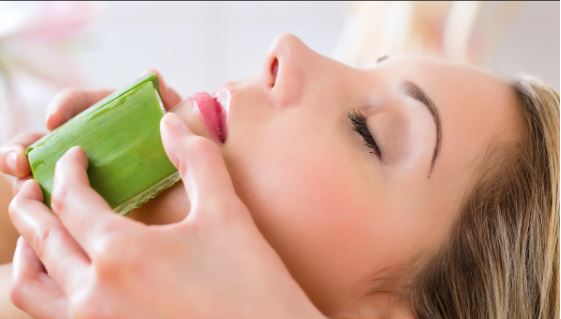10 Essential Skincare Tips for Managing Oily Skin
Oily skin can be tricky to manage, but with the right tips, you can keep that shine under control and achieve a fresh look. We’ve gathered 15 clear skincare tips that will help you tackle excess oil without over-drying your skin. Say goodbye to greasy days and hello to a more balanced complexion!
Choosing the Right Cleanser
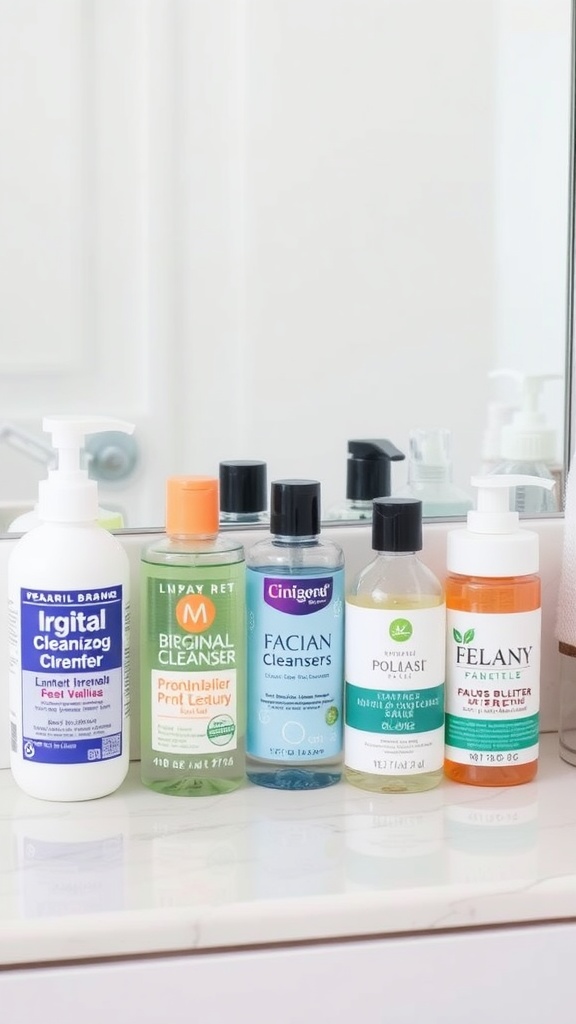
When it comes to managing oily skin, selecting the right cleanser is key. The image shows a variety of cleansers lined up in a bright bathroom setting. Each bottle has its unique label, displaying different types formulated for various skin needs. You want a cleanser that effectively removes excess oil without stripping your skin of its natural moisture.
Look for gentle, foaming cleansers or gel-based options. These types help break down oils and impurities while keeping your skin balanced. Avoid products that contain harsh sulfates or heavy oils, as they can worsen oiliness and cause breakouts.
The image highlights a selection from different brands, showcasing how many choices are available. When choosing, consider your skin’s specific needs—some may require exfoliating properties, while others can benefit from soothing ingredients like aloe vera or chamomile.
Remember, a good cleanser is the first step to a clear and fresh complexion. Try to test a few options to see which one works best for you. Happy cleansing!
Using Sunscreen Daily

Sunscreen is a must-have for everyone, especially if you have oily skin. The image shows a bottle of sunscreen with 50% SPF, which is perfect for sunny beach days. The person applying it is taking a proactive step towards protecting their skin from harmful UV rays.
Daily use of sunscreen helps prevent sun damage, which can worsen oily skin issues. It can reduce excess oil production triggered by sun exposure and keep your skin looking fresh and healthy. So, even on cloudy days or if you’re indoors, remember to apply that sunscreen!
For oily skin, look for non-comedogenic formulas that won’t clog your pores. Gel-based or matte-finish sunscreens are great choices. Make it a habit, and you’ll not only protect your skin today but also ensure its health for years to come.
Opting for Oil-Free Makeup
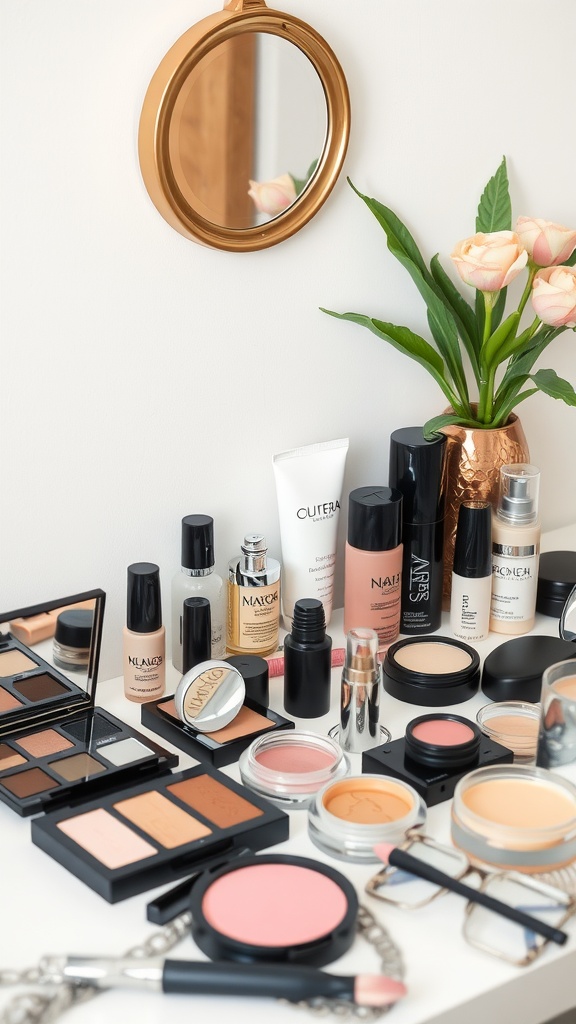
When it comes to oily skin, choosing the right makeup can make a big difference. Oil-free makeup products help keep shine at bay while providing the coverage you need. The image shows a variety of makeup items laid out neatly, including foundations, blushes, and eyeshadow palettes. All these products are designed to be lightweight and non-comedogenic, which means they won’t clog your pores.
Look for labels that say ‘oil-free’ or ‘matte finish’ on your makeup products. These formulations can help absorb excess oil, making your skin appear more balanced. The image highlights a few essential tools too, like brushes and sponges, which can help apply products smoothly without adding extra oil.
Don’t forget to check the ingredients! Ingredients like silica and clay can help control oil throughout the day. You’ll find that using the right tools and products can enhance your makeup routine while keeping your skin happy. It’s all about finding what works best for you!
Understanding Diet Impact

Our diet plays a big role in how our skin looks and feels, especially when it comes to oily skin. The vibrant image of fresh fruits and vegetables showcases the clear connection between nutrition and skin health. You can see a colorful array of produce, including tomatoes, cucumbers, and greens, all of which are packed with vitamins and antioxidants.
Eating a balanced diet rich in these natural foods can help control oil production. For instance, tomatoes are great for their vitamins, and greens provide essential nutrients. Staying hydrated is also key, and fruits like pineapple and strawberries can add to your water intake.
On the flip side, greasy fast foods and sugary snacks can make oily skin worse. They might taste good, but they can lead to breakouts and excess oil. Instead, focus on incorporating more of those colorful fruits and veggies into your meals. A simple stir-fry or salad can be both tasty and beneficial for your skin!
Importance of Moisturizing

Moisturizing is vital for maintaining healthy skin, especially for those with oily skin. The image showcases a woman receiving skincare guidance, emphasizing the importance of applying the right moisturizer. This moment highlights that even oily skin needs hydration.
Many think that oily skin doesn’t require moisturizer. This is a myth! Skipping moisturizer can lead to increased oil production, as the skin tries to compensate for the lack of moisture. A lightweight, oil-free moisturizer can help balance hydration without adding excess oil.
Using moisturizer allows the skin to stay supple and can even help reduce the appearance of pores. It’s essential to look for products containing ingredients like hyaluronic acid or glycerin that hydrate without clogging pores. Remember, the right moisturizer is a key player in your skincare routine!
Incorporating Exfoliation
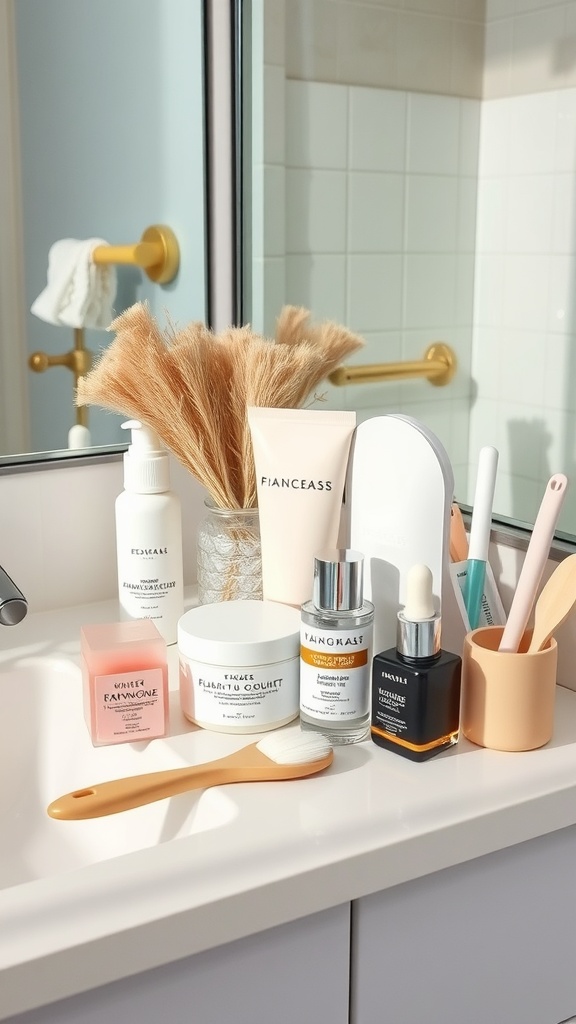
Exfoliation is a key step in any skincare routine, especially for those with oily skin. It helps remove dead skin cells that can clog pores and lead to breakouts. Regular exfoliation keeps your skin looking fresh and can improve its overall texture.
The image shows a well-organized skincare setup, featuring various products designed for exfoliation and treatment. You can see a gentle exfoliating scrub, a nourishing serum, and even some tools that can be used for applying masks or creams. This setup emphasizes the importance of having the right products on hand to create an effective routine.
Using a chemical exfoliant, such as salicylic acid, can be particularly beneficial for oily skin. These products penetrate deep into the pores, helping to dissolve excess oil and prevent future breakouts. Physical exfoliants, like the brush seen in the image, can also help, but it’s essential to choose one that’s gentle to avoid irritation.
Incorporating exfoliation into your routine two to three times a week can make a noticeable difference. Just remember to follow up with a good moisturizer to keep your skin hydrated and balanced.
Hydrating with Face Masks

Using face masks can work wonders for oily skin. They provide deep hydration while addressing oiliness, helping to balance your complexion. In the image, we see a person relaxing with a hydrating mask on. This not only looks soothing but also shows a great skincare routine in action.
Choosing the right face mask is key. Look for ingredients like hyaluronic acid or aloe vera. These ingredients hydrate without adding excess oil. Applying a mask regularly can help keep your skin moisturized and healthy.
It’s easy to incorporate face masks into your routine. Set aside some time once a week to pamper yourself. Grab your favorite mask, apply it, and let it work its magic while you relax. You might even find it to be a fun self-care moment.
Balancing with Toners
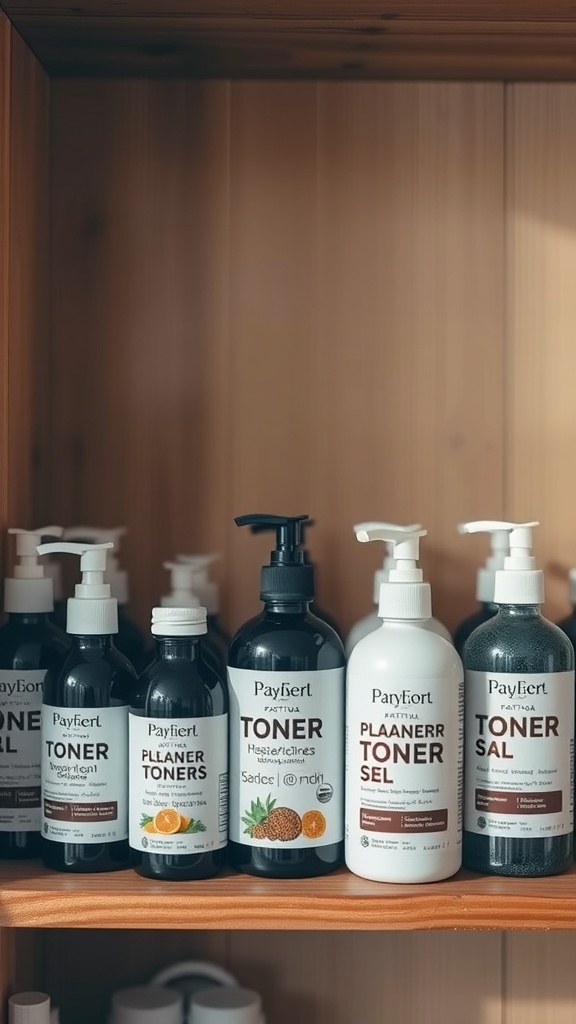
Toners are a fantastic addition to your skincare routine, especially for oily skin. They help to remove any leftover dirt and oil that cleansers might miss. The image shows a variety of toner bottles lined up neatly, each offering different benefits for skin health. This visual representation highlights how many options are available to find the perfect match for your skin.
Using a toner can help in balancing your skin’s pH levels, which is particularly beneficial if you deal with excess oil. The right toner can shrink pores and reduce shine, giving your skin a fresh look. With so many choices available, it’s easy to get overwhelmed, but focusing on your skin’s specific needs will guide you.
Look for toners that contain ingredients like salicylic acid or witch hazel, as they are known to help with oil control. Regular use can make a noticeable difference in how your skin feels and looks, keeping that shine at bay. So, if you haven’t yet incorporated a toner into your routine, now might be the perfect time to give it a try!
Managing Stress Levels

Stress can be a major factor that affects oily skin. When you’re stressed, your body produces more oil, leading to breakouts. This makes managing stress crucial for maintaining clear skin.
The image beautifully captures a serene moment of meditation in nature. The person is seated calmly, surrounded by greenery and sunlight filtering through the trees. This peaceful setting highlights how connecting with nature can help lower stress levels.
Incorporating mindfulness practices, like meditation or yoga, can be effective in managing stress. Taking time each day to breathe deeply and focus can work wonders for both your mind and skin.
Try to carve out a few minutes daily for relaxation techniques. This can be as simple as sitting quietly, like the person in the image, or practicing gentle yoga. Reducing stress not only helps your skin but also improves overall well-being.
Regular Skin Check-ups

Regular skin check-ups are essential for maintaining healthy skin, especially for those with oily skin. The image shows a consultation between a doctor and a patient in a clean, well-lit medical setting. The doctor, dressed in a white coat, is attentively discussing skin concerns with the patient who is ready to listen and engage. This scene highlights the importance of seeking professional advice for skin issues.
Visiting a dermatologist can help you understand your skin better. They can assess your skin type, recommend personalized products, and even suggest treatments for oil control. Regular appointments also allow you to catch any potential issues early on, such as acne or skin irritation.
Don’t wait until problems arise to see a professional. Make it a routine to check in with your dermatologist. This proactive approach is key to achieving and maintaining clear skin.
